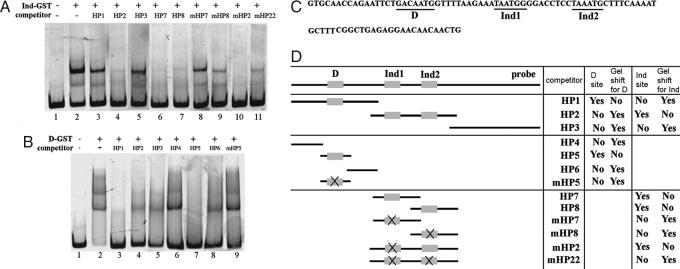Fig. 4.
Ind and Dichaete bind to a trio of sites upstream of the achaete promoter. (A and B) Gel-shift assays showing binding of Ind (A) or Dichaete (B) to the HP probe (C) and the ability of different unlabeled probes to compete for binding (D). (C) Sequence of HP probe and the location of Dichaete and Ind sites. (D) Schematic of HP probe and unlabeled competitor DNA and a tabular representation of the results shown in A and B. (A) Ind binds two adjacent sites in this region. Unlabeled probes HP7 and HP8 compete for binding of Ind to the labeled HP probe. Mutation of the consensus or near-consensus homeodomain binding sites in HP7 or HP8 (mHP7 and mHP8) block the ability of these probes to compete for binding to Ind. (B) Dichaete binds a single site in this region. Probes HP1 and HP5 contain a sequence similar to the consensus Sox-binding site and compete for Dichaete binding to the HP probe. Mutation of this sequence (mHP5) renders the probe ineffective at competing for Dichaete binding.

